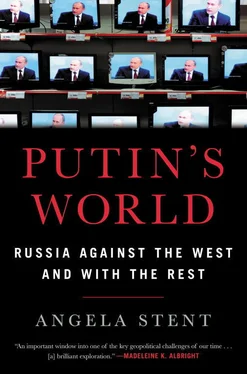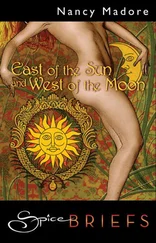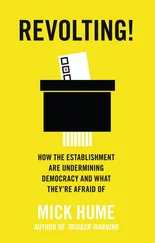But from the beginning, the US and Soviet understandings of détente were at odds with each other, even though they were both based on pragmatism and realpolitik. Nixon’s view was clear: “The Soviet Union will always act in its own self-interest; and so will the United States. Détente cannot change that. All we can hope from détente is that it will minimize confrontation in marginal areas and provide, at least, alternative possibilities in the major ones.” Kissinger elaborated further: “Détente is a means of controlling the conflict with the Soviet Union,” adding that the US needed to “manage the emergence of Soviet power.” On the face of it, Soviet leader Leonid Brezhnev’s explanation was similar: “Détente above all means overcoming the ‘cold war’ and transition to normal, equal relations among states…. Détente means a certain trust and ability to take into account the legitimate interest of one another.” Note the stress on equality and legitimate interests. But Brezhnev made it clear that détente “does not and cannot mean forgoing the objective processes of historical development.” In other words, better relations with the United States did not constrain Soviet support of national liberation movements around the world. 11
Détente worked well for a few years. It produced the first major arms control agreement between the two nuclear superpowers in 1972, a bilateral trade agreement, and the 1975 Helsinki Accords. Rhetoric on both sides was positive. But it soon became apparent that the USSR would not forgo opportunities to expand its influence in the third world, becoming involved in civil wars in Angola and Mozambique, where it supported leaders opposed by the United States, and coming close to a nuclear confrontation with the United States at the beginning of the 1973 Yom Kippur War. 12By the time Jimmy Carter became president in 1976, détente was flailing, and the White House’s focus on human rights further alienated the Kremlin.
The 1979 Soviet invasion of Afghanistan was a major turning point. For the West, this appeared to be the first step on Moscow’s march to the Persian Gulf. The Soviet invasion was partly based on incorrect information the Politburo had acquired that Afghanistan was about to abrogate its neutrality agreement with the USSR and join the West. A year after the invasion, Ronald Reagan, a dedicated anti-communist, won the US presidential election, and relations deteriorated further. A succession of three old and infirm Soviet leaders following Brezhnev’s death in 1982 left bilateral ties at a low ebb.
THE GORBACHEV THAW
And then came Gorbachev. Emerging from the Politburo gerontocracy was an energetic, voluble fifty-three-year-old leader from the provinces who was determined to overcome the years of Brezhnev’s stagnation and revitalize the Soviet Union. Ronald Reagan, despite his strong anti-communist rhetoric and depiction of the Soviet Union as the “evil empire,” was eager to meet the new Soviet leader and size him up. 13The two met in November 1985 on the shores of Lake Geneva. Despite an acrimonious discussion about the United States’ proposed Strategic Defense Initiative, whereby American missiles could intercept Soviet rockets before they reached US soil, and which the Soviets saw as a major threat, they developed a personal rapport. Reagan described the summit in glowing terms: “The world was approaching the threshold of a new day. We had a chance to make it a better and safer place.” Gorbachev agreed that the summit was a breakthrough. 14
The next summit, at Reykjavik in 1986, was more consequential. The two leaders—one an anti-communist former head of the Screen Actors Guild and the other a former provincial ideology secretary for the Communist Party—stunned their respective aides by declaring they had agreed to abolish all nuclear weapons in ten years. A dispute over the wording of the communiqué ultimately meant that the summit failed, but cooperation on many levels continued, and in 1987, both sides agreed to abolish their intermediate-range nuclear weapons and signed the INF Treaty in Washington. Gorbachev got out of his limousine on Connecticut Avenue and shook hands with admiring onlookers. The crowd was enthusiastic. A decade later Gorbachev was nostalgic about Reagan: “Ronald Reagan was the greatest Western statesman with whom I dealt,” he said. “He was an intelligent and astute politician who had vision and imagination. We were both committed to ending the arms race, to ridding the world of nuclear weapons. President Reagan was farsighted enough to respond to our initiatives on arms control. Together we made a more peaceful place. The presidents who succeeded Reagan don’t have this vision and statesmanship.” 15
Nevertheless, US-Soviet relations continued to improve under President George H. W. Bush—despite the continuing skepticism about Gorbachev among some of Bush’s top advisers—during the annus mirabilis of 1989, when Gorbachev let Eastern Europe go. After the fall of the Berlin Wall, Bush was determined to persuade his Soviet counterpart that the United States would not take advantage of the USSR’s changed international position. The two met in December 1989 on board the Maxim Gorky off the coast of Malta in stormy weather. Bush pledged continuing support for Gorbachev, who was battling domestic foes on all sides—from reformer Boris Yeltsin to the hard-liners who opposed his reforms. US-Soviet relations had improved so much that by 1990 Moscow supported Washington during the First Gulf War. Months later, after hard-liners tried to oust Gorbachev in a failed putsch, the White House continued to support him, preferring Gorbachev over his challenger, the erratic Boris Yeltsin. Bush and his advisers did not want the USSR to collapse because they feared what might succeed it and were concerned about the disposition of its large nuclear arsenal. But in the end, the USSR died from self-inflicted wounds, and the United States was a mere bystander.
THE YELTSIN PRESIDENCY
The 1990s ushered in a hopeful time in US-Russia relations. Before he took office, Bill Clinton declared that what was happening in Russia was “the biggest and toughest thing out there. It’s not just the end of communism, the end of the Cold War. That’s what’s over and done with. There’s also stuff that’s starting—stuff that’s new. Figuring out what it is, how we work with it, how we keep it moving in the right direction: that’s what we’ve got to do.” 16In retrospect, the US belief that a post-communist Russia would embrace Western-style democracy and capitalism was misplaced, but in the heady days following the Soviet collapse, it appeared that Russian society, having rejected communism, was hungry for change. Yeltsin, although he remained wary of the United States, also hoped the two countries could move beyond the Cold War and forge a new relationship, one in which Russia would be the United States’ equal. Yet by the end of the 1990s, a cascade of tensions led Yeltsin to accuse the United States of committing “aggression against Yugoslavia” and to walk out while Clinton was addressing the 1999 Istanbul OSCE summit. 17
Since the collapse of the USSR, every US administration has come into office determined to “reset” relations with Russia and seek a more productive way of interacting with the Kremlin. The same is true for the three Russian leaders since 1991. Each of these resets has ended in disappointment and mutual recriminations because, simply put, both sides have very different definitions of what a productive relationship would look like. Today the 1990s are viewed in diametrically opposite ways in the United States and in Russia. Many Americans who dealt with Russia during that decade believed the country was moving—albeit erratically—toward a more pluralistic political system that encouraged competition and debate. They also witnessed the development of a unique form of Russian capitalism and the rise of the oligarchs. They welcomed Russia’s cooperation—sometimes grudging—on foreign policy challenges. For them, the 1990s was a time of promise, and they believed that despite the disintegration of institutions that followed the Soviet collapse, Russia was developing in the right direction toward a democratic, market-oriented society willing to work with the West internationally.
Читать дальше












